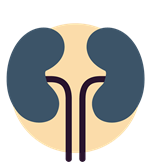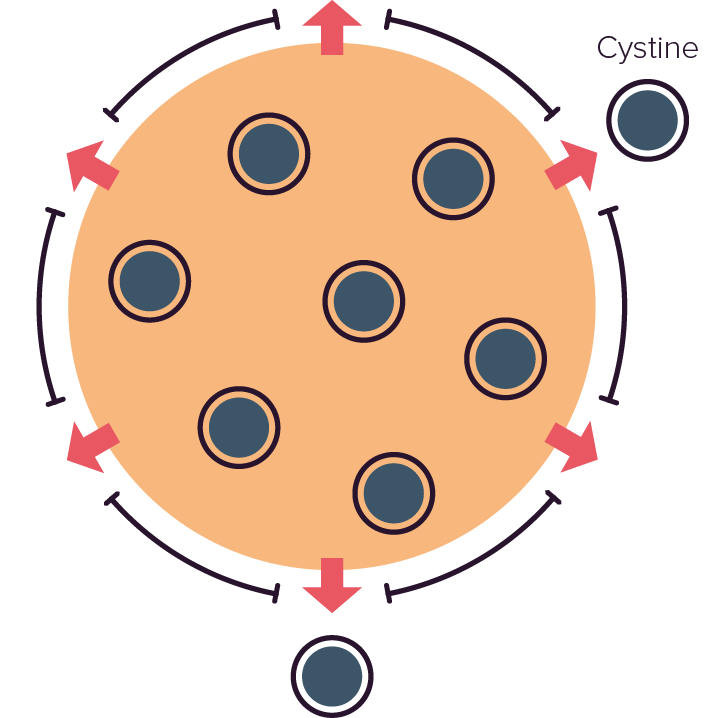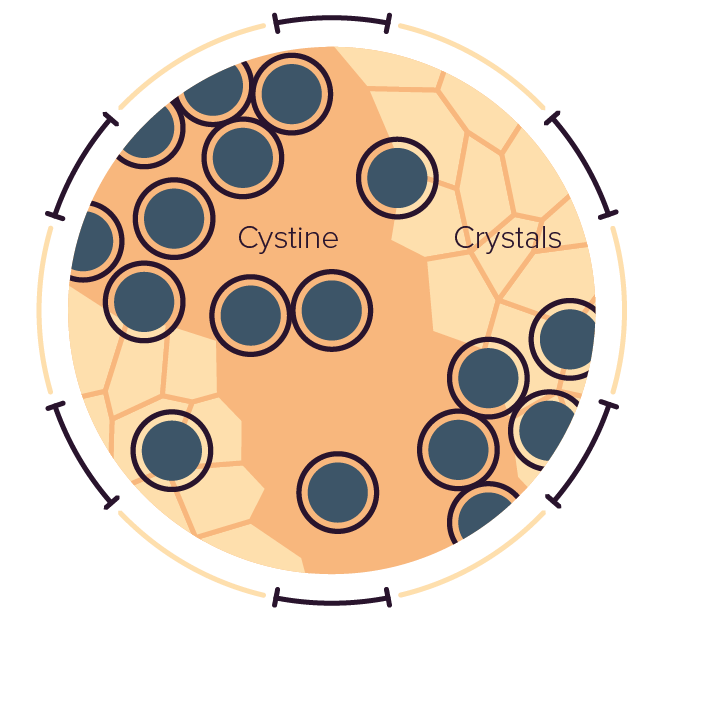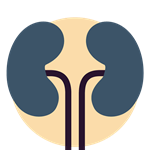
What is cystinosis?
Cystinosis is an extremely rare genetic condition which affects fewer than 2 people in every million.1
In people with cystinosis, an amino acid called cystine builds up in a part of the cell called the lysosome, and the cells are unable to remove it.1

Inside a normal lysosome

Inside a lysosome of someone with cystinosis
When cystine builds up, it forms crystals within cells that can cause long-term damage to organs, including the kidneys, eyes, muscles, pancreas, and brain1. This damage cannot be reversed, but it can be delayed or reduced.2
Newborn babies do not show symptoms of cystinosis. Instead, these start to appear in the child’s first year of life.1,3
How is cystinosis inherited?
Cystinosis is an inherited disease that is passed from parent to child. Cystinosis is caused when a gene doesn’t work as it should, leading to problems with the way cystine is stored in the body. Cystinosis can only develop in children who receive an abnormal copy of the cystinosis gene from each parent.1,3
What are the different types of cystinosis a person might have?
There are three types of cystinosis, which are classified according to how severely the kidneys are affected and at what age the symptoms start appearing:1,4
cystinosis
nephropathic cystinosis
cystinosis





